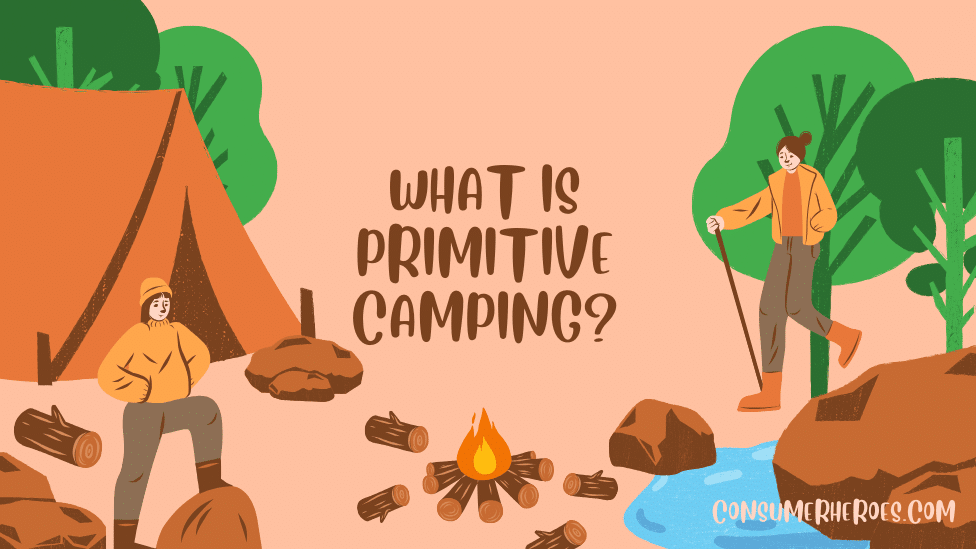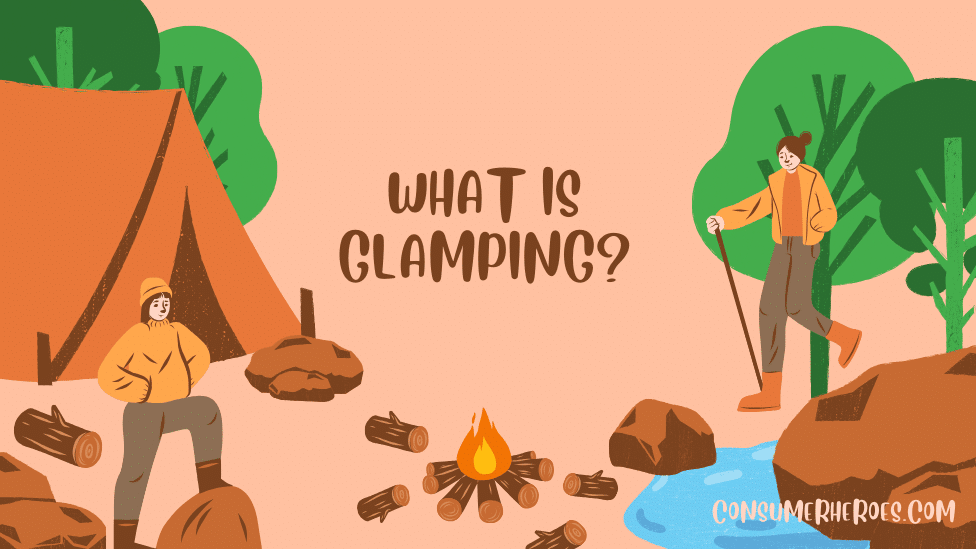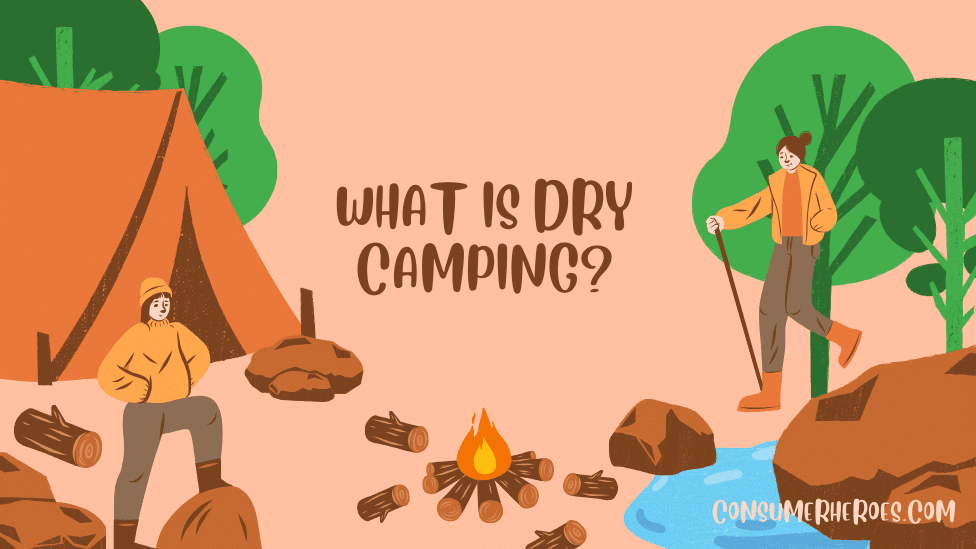Primitive camping is a type of camping that involves minimal equipment and relies on natural resources for survival. It is often referred to as backcountry camping, wilderness camping, or survival camping. Primitive camping is a great way to disconnect from technology and reconnect with nature.
Unlike traditional camping, primitive camping does not involve the use of RVs, cabins, or other modern conveniences. Instead, campers must rely on their own skills and knowledge to survive in the wilderness. This includes building their own shelter, starting a fire without matches, and finding their own food and water sources. Primitive camping requires a certain level of physical fitness and outdoor experience, as it can be challenging and unpredictable.
Overall, primitive camping offers a unique and rewarding outdoor experience for those who are willing to embrace the challenges and uncertainties of the wilderness. It provides an opportunity to disconnect from the modern world and connect with nature in a more profound way. However, it is important to approach primitive camping with caution and respect for the environment to ensure a safe and sustainable experience.
What is Primitive Camping?
Primitive camping is a type of camping that involves going back to basics and leaving behind the modern amenities of traditional campsites. It is a form of camping that requires a certain level of self-sufficiency and knowledge of the outdoors. Unlike traditional camping, primitive camping does not have designated campsites or facilities such as running water, electricity, or restrooms.
Primitive camping is often done in remote and undeveloped areas, such as national parks, forests, and wilderness areas. It is a way to connect with nature and experience the wilderness in a more intimate and personal way. It is also a great way to disconnect from technology and the stresses of modern life.
To practice primitive camping, campers must bring all of their own supplies and equipment, such as tents, sleeping bags, food, and water. They must also be knowledgeable about the environment they will be camping in, including the weather, wildlife, and terrain. It is important to practice Leave No Trace principles and minimize impact on the environment.
Overall, primitive camping is a great way to experience the beauty and solitude of nature in a more raw and authentic way. It requires a certain level of skill and preparation, but the rewards are well worth the effort.
Benefits of Primitive Camping
Primitive camping, also known as backcountry camping or wilderness camping, offers a unique and rewarding experience for those who enjoy spending time in nature. Here are some benefits of primitive camping:
1. Disconnect from Technology
One of the biggest benefits of primitive camping is the opportunity to disconnect from technology and enjoy the peace and quiet of nature. Without the distractions of phones, computers, and other devices, campers can fully immerse themselves in the natural world and appreciate the beauty around them.
2. Challenge Yourself
Primitive camping requires more preparation and self-sufficiency than traditional camping. Campers must carry all of their gear and supplies, find their own water sources, and navigate their way through the wilderness. This can be a challenging and rewarding experience that helps build self-confidence and resilience.
3. Explore Remote Locations
Primitive camping allows campers to access remote and untouched locations that are not accessible by car or RV. This provides a unique opportunity to explore areas that few people have seen and to appreciate the natural beauty of the wilderness.
4. Experience Wildlife
Primitive camping provides the opportunity to experience wildlife up close and personal. Campers may see a variety of animals, including deer, elk, bears, and birds. This can be a thrilling and unforgettable experience that connects campers to the natural world.
5. Reduce Environmental Impact
Primitive camping is a more environmentally friendly option than traditional camping. Campers are required to pack out all of their trash and waste, minimizing their impact on the environment. Additionally, primitive camping areas are often less developed and have fewer amenities, which helps to preserve the natural beauty of the wilderness.
Essential Gear for Primitive Camping
When it comes to primitive camping, having the right gear is crucial to ensure a safe and comfortable experience. Below are some of the essential gear items that every camper should have.
Tent
A good quality tent is essential for a successful camping trip. It provides shelter from the elements and a place to sleep. When choosing a tent, consider the size, weight, and durability. A tent that is too small or too heavy can make the camping experience uncomfortable. A durable tent that can withstand wind and rain is also important.
Sleeping Bag
A sleeping bag is another essential item for primitive camping. It provides warmth and comfort during the night. When choosing a sleeping bag, consider the temperature rating, size, and weight. A sleeping bag that is too small or too thin can make for a cold and uncomfortable night’s sleep.
Cooking Equipment
Cooking equipment is necessary for preparing meals while camping. This includes a stove, fuel, pots, pans, utensils, and a cooler. When choosing cooking equipment, consider the size, weight, and portability. A lightweight and compact stove and cookware set are ideal for backpacking trips.
First Aid Kit
A first aid kit is an essential item for any camping trip. It should include items such as bandages, gauze, antiseptic, pain relievers, and insect repellent. When choosing a first aid kit, consider the size and contents. A comprehensive first aid kit is ideal for longer trips or trips with larger groups.
In conclusion, having the right gear is essential for a successful primitive camping trip. A good quality tent, sleeping bag, cooking equipment, and first aid kit are just a few of the essential items that every camper should have.
Choosing a Location for Primitive Camping
When it comes to primitive camping, choosing the right location is crucial to ensure a safe and enjoyable experience. Here are a few factors to consider when selecting a campsite:
Weather Conditions
The weather can greatly impact your camping experience, so it’s important to check the forecast before heading out. Look for a location that offers adequate shelter from wind, rain, and extreme temperatures. Avoid camping near rivers or other bodies of water during rainy seasons, as flash floods can occur.
Terrain
The terrain of your campsite can impact your level of comfort and safety. Look for a flat, dry area to set up your tent and avoid camping on steep slopes or in areas prone to rockslides. Be mindful of any potential hazards, such as loose rocks or unstable trees, and avoid camping near cliffs or other drop-offs.
Accessibility
Consider how easy it will be to access your campsite. Look for a location that is easily accessible by car or foot, and avoid camping in areas that require long hikes or difficult terrain to reach. Also, be mindful of any regulations or restrictions in the area, such as fire bans or permits required for camping.
By considering these factors when selecting a campsite, you can ensure a safe and enjoyable primitive camping experience.
Safety Measures in Primitive Camping
When it comes to primitive camping, safety should always be a top priority. Here are some key safety measures to keep in mind:
Wildlife Precautions
It’s important to remember that you are a guest in the animals’ natural habitat when you are primitive camping. Here are some tips to help you stay safe:
- Store your food in a bear-resistant container or hang it from a tree at least 10 feet off the ground and 4 feet away from the trunk.
- Keep a safe distance from wildlife. Never approach or feed them.
- Learn about the animals in the area you will be camping in and their behaviors. This will help you know how to respond if you encounter them.
- Be aware of your surroundings, especially at night. Use a flashlight to see what’s around you.
Fire Safety
Fires can be a great source of warmth and comfort while primitive camping, but they can also be dangerous. Here are some tips to help you stay safe:
- Check for any fire restrictions or bans in the area you will be camping in.
- Only build fires in designated fire rings or pits, and keep them small.
- Never leave a fire unattended. Make sure it is completely extinguished before leaving it.
- Keep a bucket of water or a shovel nearby in case of an emergency.
Water Safety
Water is essential to survival, but it can also be dangerous. Here are some tips to help you stay safe:
- Always treat water from natural sources before drinking it.
- Avoid swimming in unfamiliar bodies of water, especially if you don’t know how to swim.
- Wear a life jacket if you will be boating or kayaking.
- Avoid camping near rivers or streams during times of heavy rain or snow melt, as water levels can rise quickly.
By following these safety measures, you can ensure a safe and enjoyable primitive camping experience.
Leave No Trace Principles
Primitive camping is a great way to experience nature and get away from the hustle and bustle of everyday life. However, it is important to remember that we are guests in the natural world and we must take care of it. Leave No Trace is a set of principles that guides us in how to minimize our impact on the environment while camping.
The seven Leave No Trace principles are:
- Plan ahead and prepare: This means researching the area you will be camping in, bringing the right gear, and packing out all trash and waste.
- Travel and camp on durable surfaces: Stick to established trails and campsites to avoid damaging vegetation and soil.
- Dispose of waste properly: This includes burying human waste at least 200 feet from water sources and packing out all trash.
- Leave what you find: Do not disturb or remove any natural features, such as rocks, plants, or wildlife.
- Minimize campfire impact: Use established fire rings and only burn small sticks and twigs. Do not cut down trees for firewood.
- Respect wildlife: Observe animals from a distance and do not feed them.
- Be considerate of other visitors: Keep noise levels down and respect the privacy of other campers.
By following these principles, campers can help preserve the natural beauty of the wilderness for generations to come.
Conclusion
Primitive camping is a form of camping that allows individuals to enjoy the great outdoors in a more natural and remote environment. It is a way to escape the hustle and bustle of everyday life and connect with nature on a deeper level.
While primitive camping may not be for everyone, it is a great way to challenge oneself and learn new skills. It requires individuals to be self-sufficient and prepared for any situation that may arise.
One of the biggest benefits of primitive camping is the opportunity to disconnect from technology and enjoy the peace and quiet of nature. It allows individuals to slow down and appreciate the simple things in life.
However, it is important to remember that primitive camping comes with its own set of challenges and risks. It is important to be prepared and knowledgeable about the environment and potential hazards.
Overall, primitive camping is a great way to experience the beauty of nature and challenge oneself. With the right preparation and mindset, anyone can enjoy this form of camping.







